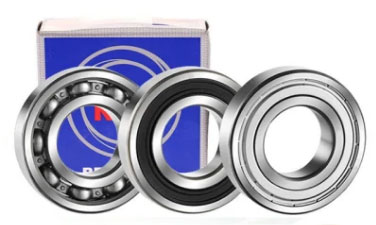Home / News / CNC Bearing Temperature: Causes, Effects, and Solutions
CNC Bearing Temperature: Causes, Effects, and Solutions
Introduction
CNC (Computer Numerical Control) machines are indispensable tools in the modern manufacturing industry. They provide high precision, speed, and automation, enabling manufacturers to produce complex parts with minimal human intervention. One critical component of CNC machines is the bearing, which plays a vital role in ensuring smooth and accurate motion. However, bearing temperature can become a significant concern for CNC machine operators, as elevated temperatures may lead to reduced efficiency, bearing failure, and costly downtime. In this article, we will discuss the causes, effects, and solutions for managing CNC bearing temperature.

Causes of High Bearing Temperature
Friction: Friction between the bearing surfaces generates heat, which can lead to a rise in temperature. Excessive friction can be caused by misalignment, overloading, or insufficient lubrication.
Inadequate Lubrication: Proper lubrication reduces friction and dissipates heat. If the lubricant is insufficient, contaminated, or has lost its effectiveness, the bearing temperature can increase.
Overloading: When bearings are subjected to loads beyond their design limits, it can result in increased friction and temperature.
Misalignment: Poorly aligned bearings generate excessive friction, increasing the temperature.
Ambient Temperature: High ambient temperatures can contribute to elevated bearing temperatures, especially if the cooling systems are not efficient enough to dissipate the heat generated.
Effects of High Bearing Temperature
Reduced Bearing Life: High temperatures can lead to accelerated wear and tear, reducing the service life of the bearing.
Decreased Machine Accuracy: Elevated bearing temperatures can result in thermal expansion, causing dimensional changes that affect the accuracy of the CNC machine.
Lubricant Breakdown: High temperatures can cause the lubricant to break down, reducing its effectiveness and leading to increased friction.
Premature Bearing Failure: Extreme temperatures can cause bearing materials to deform or crack, resulting in premature failure.
Solutions for Managing CNC Bearing Temperature
Regular Maintenance: Ensure that the bearings are regularly inspected, cleaned, and lubricated to reduce friction and heat generation.
Proper Lubrication: Use the recommended lubricant type and amount to maintain optimal bearing performance.
Correct Alignment: Ensure that the bearings are properly aligned during installation and regular maintenance checks.
Load Monitoring: Monitor the CNC machine's load during operation and avoid overloading the bearings.
Efficient Cooling Systems: Implement adequate cooling systems to dissipate heat generated during operation and maintain a suitable ambient temperature.
Conclusion
High bearing temperature is a critical issue that can affect the performance and longevity of CNC machines. By understanding the causes and effects of elevated bearing temperatures, operators can take appropriate measures to mitigate the risks and maintain optimal machine performance. Regular maintenance, proper lubrication, correct alignment, load monitoring, and efficient cooling systems are essential strategies to manage and prevent high CNC bearing temperature.
- Previous: CNC Bearing Maintenance: Essential Practices for Prolonging Bearing Life and Ensuring Optimal Perfor
- Next: Spindle Bearing Preload Formula: The Key to Optimal Performance and Bearing Life













